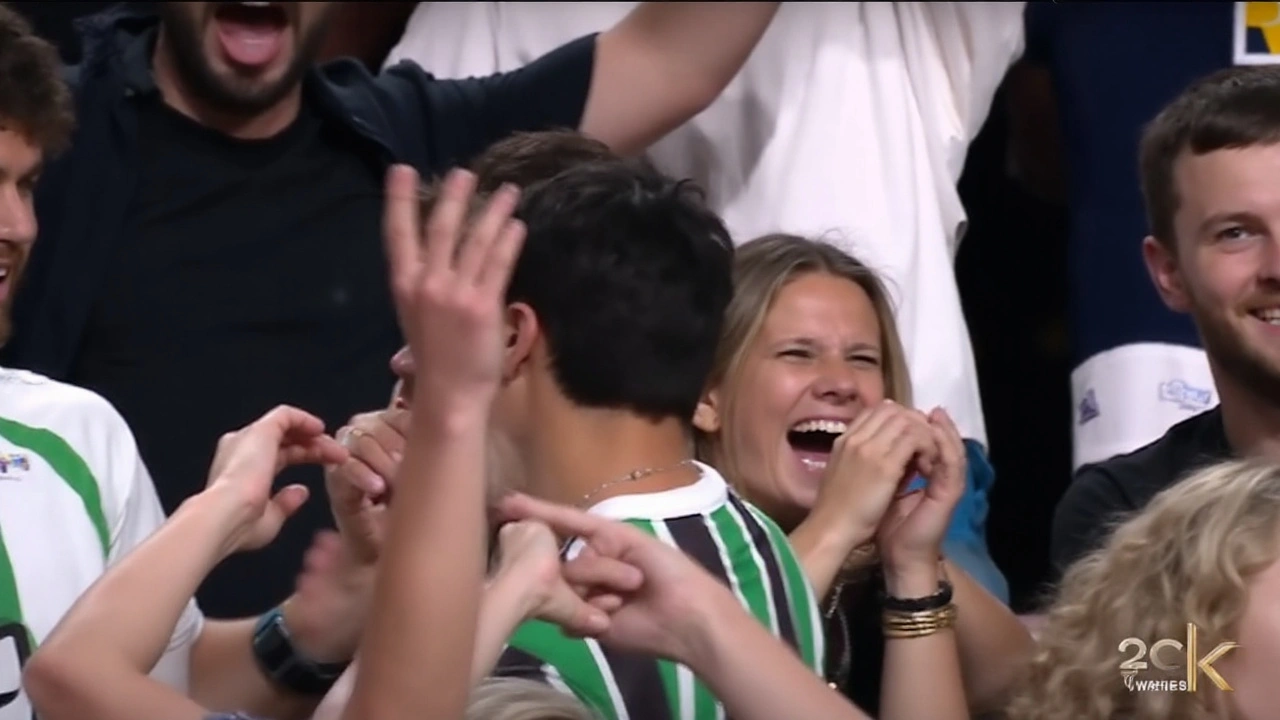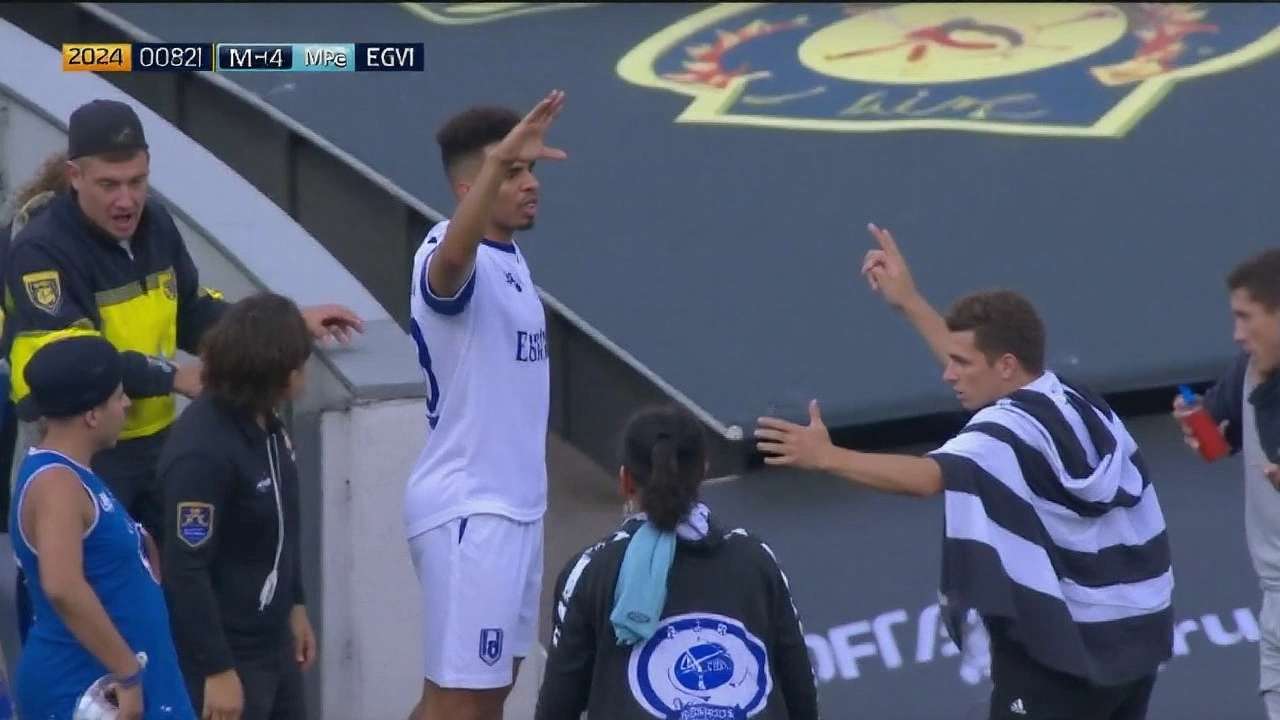Chaos in the stands during a stunning upset
A violent brawl erupted between supporters of Botafogo vs PSG during their FIFA Club World Cup match at the Rose Bowl in Pasadena on June 20, 2025. The clash unfolded in the stands while Botafogo pulled off a shock 1-0 victory over the European champions, a result that sent the Brazilian side to the top of Group B and flipped the tournament narrative on its head.
Video from multiple angles, shared widely on social media, shows groups of fans throwing punches and shoving each other as others tried to pull them apart. Several people were injured in the melee, according to those present, with some taking heavy blows before the crowd scattered. The images are raw and unsettling—one of the first truly disturbing moments of this Club World Cup.
What makes the scene even starker is how quickly the mood shifted. The night started with color and noise—flags waving, chants bouncing across the old bowl, and confident predictions from both sides. Botafogo fans traveled in numbers, PSG supporters came with European swagger, and the Rose Bowl, packed for a global showcase, felt like a festival. Then, in a span of minutes, celebration gave way to panic as tensions spilled over.
It’s not clear what triggered the fight. Some clips show verbal sparring that escalates, others capture only the worst of it—fists flying, people tumbling over rows, and frightened spectators trying to move children away from the crush. From the footage alone, it’s hard to see the initial spark or how quickly security reached the section where it started.
On the field, the story was all Botafogo. The Brazilian club, South American champions and underdogs on the night, held firm and finished off an upset that will be remembered for years. But that sporting moment didn’t get the clean stage it deserved. Instead, the images racing around the world were of fans fighting under the stadium lights, drowning out the roar for a historic win.

Security questions and what happens next
The fallout began almost immediately. For tournament organizers and stadium operators, the questions are basic but urgent: how did rival groups end up close enough for this to happen, and why weren’t tensions spotted and defused sooner? The Rose Bowl regularly hosts massive events, from American college football to global soccer friendlies. With that history comes a playbook—segregated seating for rival fan bases, buffer zones, strong steward presence, and quick-response teams ready to move if things turn.
Whether those layers were in place, or whether they were stretched by the scale and emotion of the night, remains unclear. The Club World Cup is built to be a global celebration, and that means mixing fan cultures that travel hard and sing louder. South American passion meets European tradition meets a U.S. venue that’s hosting a brand-new, expanded FIFA event. That combination can be magic. It can also be combustible when small sparks—taunts, spilled drinks, a push—hit the wrong corner of a crowded stand.
As of late Thursday, exact injury counts had not been publicly confirmed. Witnesses reported several people needing help after taking heavy hits, and clips show shaken fans moving away from the fray. There was no immediate word on arrests or charges tied to the incident. What’s certain is that the tournament’s security operation is now under a microscope, and the next matchdays will be watched closely for changes on the ground.
Disciplinary action is possible. FIFA competitions allow for a range of sanctions when crowd trouble occurs—fines, partial stadium closures, restrictions on ticket allocations, or other measures designed to separate rival supporters and prevent repeat incidents. Whether those steps land on the clubs, on the match organizers, or on specific sections tied to the fight will depend on official reports and video analysis.
For Botafogo, the result itself is massive. The Brazilian side’s 1-0 win over PSG—European champions and the pre-tournament favorites in many eyes—reshapes Group B. It places Botafogo in control of their path and adds a layer of pressure on PSG, who are now chasing points in a format that leaves little room for slip-ups. The football was disciplined and direct, the kind of performance that turns a tournament campaign. Unfortunately, the storyline is sharing space with a different headline.
Inside the stadium, the mix of fan bases was striking. You had Brazilian shirts in clusters, flags draped over shoulders, drums and songs that rarely stopped. Across the bowl, waves of PSG supporters brought a wall of blue and red, singing their own anthems, trading chants back and forth. That’s the best of these events—when cultures collide in spirit, not in fists. The line between the two is thinner than many admit, and on this night it vanished.
Online, reaction heated up fast. Some supporters condemned the behavior and called for swift bans for those involved. Others pointed to soft stewarding in certain aisles and said the warning signs were there—taunting, crowding, people standing in aisles as the match tightened. There were also pleas from neutrals and families who came for the soccer and ended up spending part of the night trying to move away from a fight. That’s the kind of image a global tournament doesn’t want on replay.
For the next fixtures, expect a tightened approach—more visible stewards, clearer separation between rival sections, and stricter controls on movement between blocks. Entry screening tends to focus on prohibited items, but in matches flagged as high-risk, organizers also adjust how fans are routed to their seats and how exits are staggered. These are tweaks that regulars might notice and first-timers won’t, but they matter when the atmosphere runs hot.
- Injury details: an official tally and the medical picture for those hurt.
- Law enforcement steps: whether arrests were made and what charges follow.
- Disciplinary measures: potential fines or restrictions from tournament authorities.
- Operational changes: how security, seating, and stewarding will be modified for upcoming games at the Rose Bowl and beyond.
The Club World Cup is here to showcase elite teams to a U.S. audience hungry for big matches. On the pitch, Botafogo delivered the kind of upset that gives a tournament bite. Off it, the night turned into a stress test for safety planning at one of the country’s most famous stadiums. The football mattered. So did what happened around it. What organizers do between now and the next kickoff will tell us which of those two stories defines this stop on the road to a world title.


Comments (11)
It's disappointing to see safety slip at such a high‑profile event.
Security planning for mixed‑nationality crowds has to balance open atmosphere with firm barriers. Organizers usually create buffer zones between rival sections and increase steward visibility after the kickoff. In this case the proximity of the Botafogo and PSG blocks seems to have been mis‑calculated, allowing a spark to grow into a brawl. A rapid response team should have intervened within seconds, but the video shows a noticeable delay. Going forward, stricter segregation and real‑time monitoring are essential to protect fans.
The clash of colors in the Rose Bowl turned into a clash of tempers almost as soon as the final whistle blew.
When passion crosses the line into aggression, the stadium becomes a mirror reflecting our collective volatility.
Fans travel across oceans carrying flags, songs, and a deep sense of identity that they proudly display.
Those symbols are meant to unite, yet they also mark borders that can be exploited by provocateurs.
In the heat of a surprising upset, emotions run high and the adrenaline of victory fuels both celebration and resentment.
A single shouted insult can act like a match, igniting a tinderbox of anger that spreads through the crowd.
The video shows fists flying, but behind each punch lies a story of jealousy, fear, and a perceived threat to one's group.
We must ask why the steward presence was insufficient, allowing the situation to spiral before intervention.
Perhaps the security staff were overwhelmed by the sheer volume of people packed into the historic venue.
Or maybe the protocols for high‑risk matches were outdated, relying on manual observation instead of technology.
Modern stadiums can use AI‑driven crowd analytics to detect rising tension before it erupts.
The lack of such tools here left officials reacting only after the violence had already erupted.
This incident also highlights how cultural misunderstandings can quickly become physical confrontations.
Each side believed the other was encroaching on their space, and the resulting territorial instinct manifested as fists.
The tragedy is that the beautiful game was eclipsed by a moment that could have been prevented with better planning.
Ultimately, the responsibility falls on organizers, clubs, and supporters alike to keep the passion alive while respecting safety.
Seeing fans turn on each other is just classic circus behavior. The organizers clearly dropped the ball on crowd control, and the blame lands squarely on their lazy planning. If security can't handle a few passionate supporters, maybe they should cancel the event. The whole thing looks like a staged drama for headlines.
Security gaps are a real issue, and the footage proves the need for faster intervention. 🛡️ Better steward training and clear sector division could have stopped the fight before it spread.
What we don't see on TV is the hidden agenda behind allowing rival groups to mingle so closely. It's a deliberate strategy to incite chaos, distracting us from deeper corruption within the sport's governing bodies. Until the powers that be are held accountable, incidents like this will keep happening.
Your analysis hits the nail on the head. Crowd‑analytics could have flagged the rising tension, and a quick call to stewards might have prevented the melee. The cultural pride that fuels chants can also fuel conflict when unchecked. A balanced approach keeps the excitement alive without endangering fans.
Nice recap of what went on, short and sweet.
Totally agree, the clubs need to work with local authorities to tighten up seating plans and keep the vibe positive for everyone.
The incident underscores the necessity for comprehensive risk assessments prior to high‑profile matches. Organizers should incorporate collaborative input from law‑enforcement, fan groups, and independent safety consultants to formulate robust mitigation strategies. Transparent post‑event reviews will also reinforce public confidence in the tournament's governance.
Enough with the blame‑shifting, let's focus on concrete steps to keep fans safe and let the sport shine.